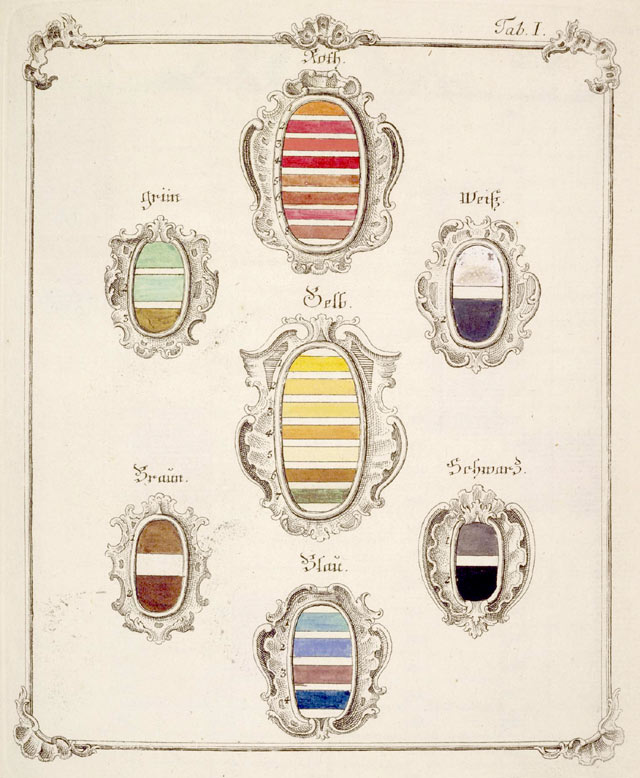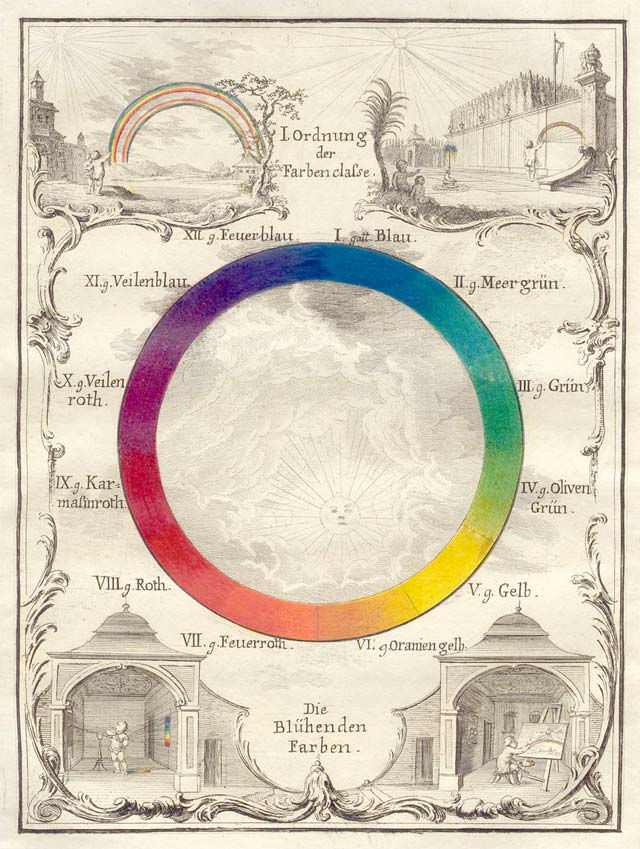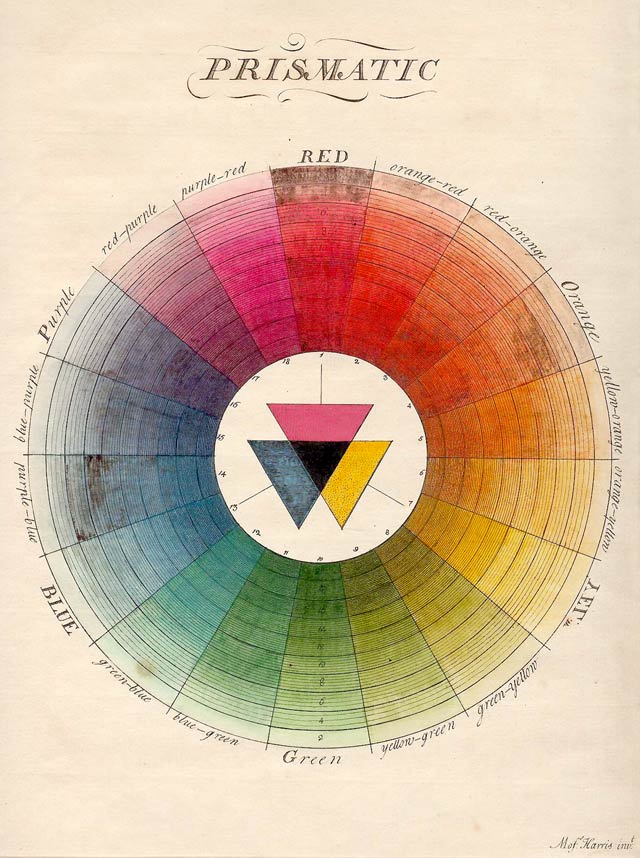How many ways can you reshuffle the rainbow? Three, as a matter of fact, if modern color theory is to be believed: Pantone numbers for print designers and brand managers; hex, RGB, and CMYK values for web designers; and CIELAB and CIECAM02 color models for the scientific community. But while the science of color models is largely settled, all that rigorous theory still doesn’t quite squeeze out the sense of fallible humanity underpinning the history of the color wheel.
All it used to take was a load of brilliant chutzpah, a dogged sense of orderliness, and just a smidgen of actual science to impose your personal order over the color universe. This post and the next salute the color giants of centuries past and their often-fanciful, sometimes inaccurate, but always wildly rollicking wheels.

Slightly dotty in the science department but much-loved by generations of art historians and philosophers, Johann Wolfgang von Goethe's Theory of Colours coincided with this wheel (left) he designed in 1810. In the book, Goethe rebutted Newton’s color-spectrum theory by imagining darkness not just as absence of light but as its own active force. As light struck dark, in Goethe’s view, their battle threw off observable sparks of color.
During the week, Goethe devoted himself to such legend-building stuff as inventing the Italian tour, discovering the human intermaxillary bone, and giving voice to Sturm und Drang and Weltliteratur. But Goethe spent his weekends breathing on glass panes, prodding chocolate-froth bubbles, and flapping his arms in broad daylight, then jotting down how colors changed in each observation. The resulting catalog is an impressive confluence of exhaustive scientific inquiry and pointillistic word-art.
But Goethe had quite a few predecessors, some more wedded to the wheel-shape in quantifying color than others. (It’s an oddly Germanic list, too, these would-be color scientists.) In 1686, Richard Waller’s "Table of Physiological Colors Both Mixt and Simple" offered a handy table for cross-referencing colors one might find in nature samples. If a shade didn’t match exactly, Waller explained, it was a simple matter to locate where on the table’s color-continuum that shade might fall:



In 1769, Jacob Christian Schäffer – a naturalist, inventor and German Evangelical superintendent of Regensburg – tackled this natural limitation of the table format in his own color system. He gave blue, red, and yellow pride of place in his hierarchy, explaining how these primary colors could be combined to create a multitude of shades in between:

Photograph © 2002 Board of Trustees, National Gallery of Art, Washington, D.C. via The Creation of Color in Eighteenth Century Europe by Sarah Lowengard


Go here for Part 2
[Thanks to Sarah Lowengard’s impressive project The Creation of Color in Eighteenth Century Europe and COLOURLovers’ concise summary of the project for great inspiration.]
Read more: History of the Color Wheel | Part 1 — Imprint-The Online Community for Graphic Designers






